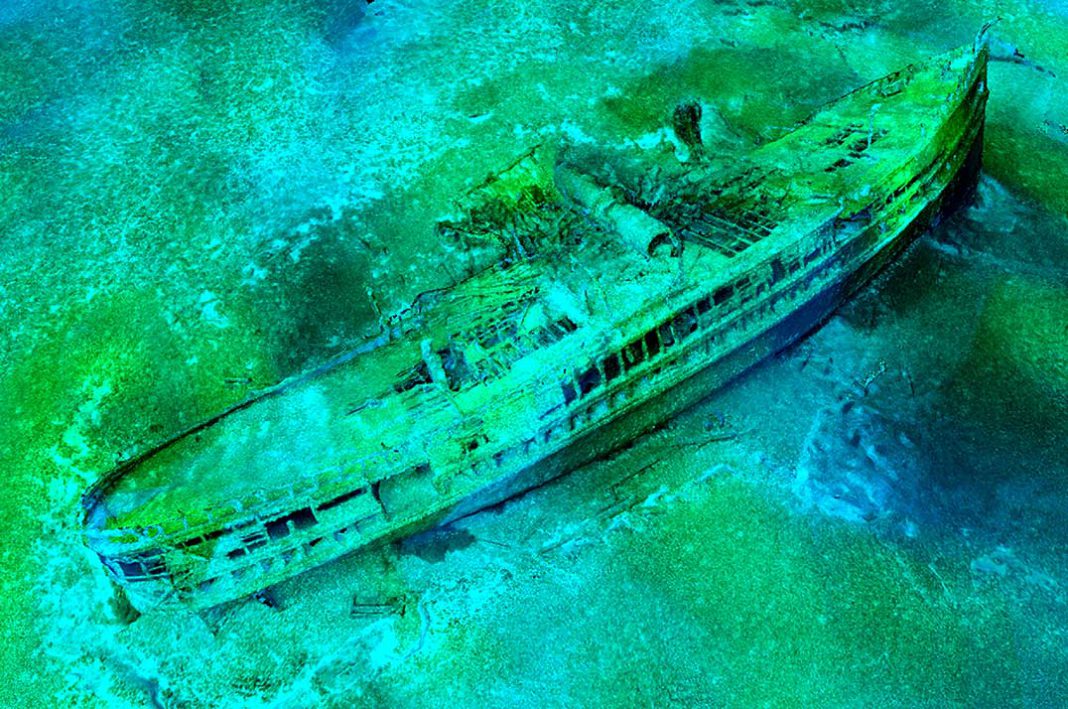Island-bound J.H. Jones counted three Manitoulin men aboard
by Cris Kohl
LION’S HEAD—The wreck of the coastal steamer, J. H. Jones, that was tragically lost with all 30 people on board in a storm on November 22, 1906, has finally been located in southern Georgian Bay near Lion’s Head by an international team of searchers/divers.
The Jones, built at Goderich in 1888 as a fishing tug, measured only 107 feet (32.4 metres) in length, but was so strongly built that she was quickly repaired and returned to service as a combination passenger and package freighter following a collision with the large steamer, Pacific, in 1898.
On the day the Jones disappeared in 1906, she was hauling a full cargo of general freight to Lion’s Head, as well as miscellaneous items such as a brick-moulding machine, a sleigh, about 20 barrels of coal oil, plus 17 passengers and 13 crew.
According to some J. H. Jones folklore, the waters were rough that day and despite protest from many, the captain was heard by all around him before leaving the dock that he “intended on eating breakfast in Tobermory or hell.”
The last person to see the ship was the lighthouse keeper at nearby Cape Croker. Two lifeboats, part of the ship’s pilot house, and only one body—that of a young businessman from Manitoulin Island named Richard Addison—were found on Christian Island across the bay. The entire crew was from Wiarton and this sinking became that community’s greatest disaster, putting the small town in mourning for months. Mr. Addison was buried in Silver Water.
Two other Islanders perished in the wreckage: T.M. Wagg of Mindemoya and D. McIvor of Providence Bay. The boat was headed for the south shore of Providence Bay.
Ken Merryman and Jerry Eliason, both from Minnesota, and Cris Kohl, from Windsor, located the J. H. Jones in just under 200 feet of water on Canada Day, July 1, 2018. All three have considerable experience in finding and identifying shipwrecks in the Great Lakes.
Accompanying them on the boat was Robert Crawford, the 83-year-old great-grandson of Captain James Crawford, who was lost with the Jones in 1906. Robert’s son, Dan, sent along some additional information about the Jones.
“I never thought the wreck would be found in my lifetime,” confessed Mr. Crawford, “but when that little image appeared on the screen, and I later watched video of the actual shipwreck that was sent up to our boat by a remote-operated camera, I was elated! I was a bit surprised that I felt far more excitement than sadness.”
Although numerous attempts had been made to locate the Jones over the past few decades, the shipwreck remained elusive.
“I had confidence in my research, which I began years ago,” revealed Mr. Kohl, “and after I put it all together, I told Ken last April that I could take him right to that shipwreck.” Mr. Kohl and his wife, researcher/writer Joan Forsberg, have written 16 books about Great Lakes shipwrecks.
Mr. Merryman, a technical diver and an exceptional underwater videographer, and Mr. Eliason, an electronics wizard with several wreck-finding inventions to his credit, most recently (in 2017) located the wreck of the steamer, Jane Miller, which disappeared with all hands in a late 1881 storm off Wiarton. However, the adventurous pair is best known for their discoveries over the past 30 years of very deep shipwrecks in Lake Superior.
On July 1, 2018, again working under an archaeological license issued to Mr. Merryman by the province of Ontario (such a licence is a requirement for anyone searching for a shipwreck in Canadian waters of the Great Lakes), the team found the Jones shipwreck after less than two hours of searching.
The next day, Mr. Merryman and Mr. Kohl became the first divers to visit the wreck of the J. H. Jones. They shot video of the hull, which remains mostly intact, despite missing many pieces where its doors and windows had been, plus hull siding. The smoke stack has toppled over onto its side, but the steam whistle remains in place and, at the stern, the rudder and the tip of the embedded propeller are identifiable. The on-deck cargo has been swept away by wind, waves, and time, and, looking inside, the divers saw steam engine components, but no signs of any human remains.
“It’s exciting to locate such an historic shipwreck, even with its very tragic history,” Mr. Merryman offered. “Now the complete story of this vessel can be told because it is no longer a ‘mystery wreck.’ Much of its story has actually been told already, but there was always those final elements missing, namely its location, what it looks like today, and what those physical remains could reveal to us.”
The team hopes that further study of the shipwreck will add more information to its story.





